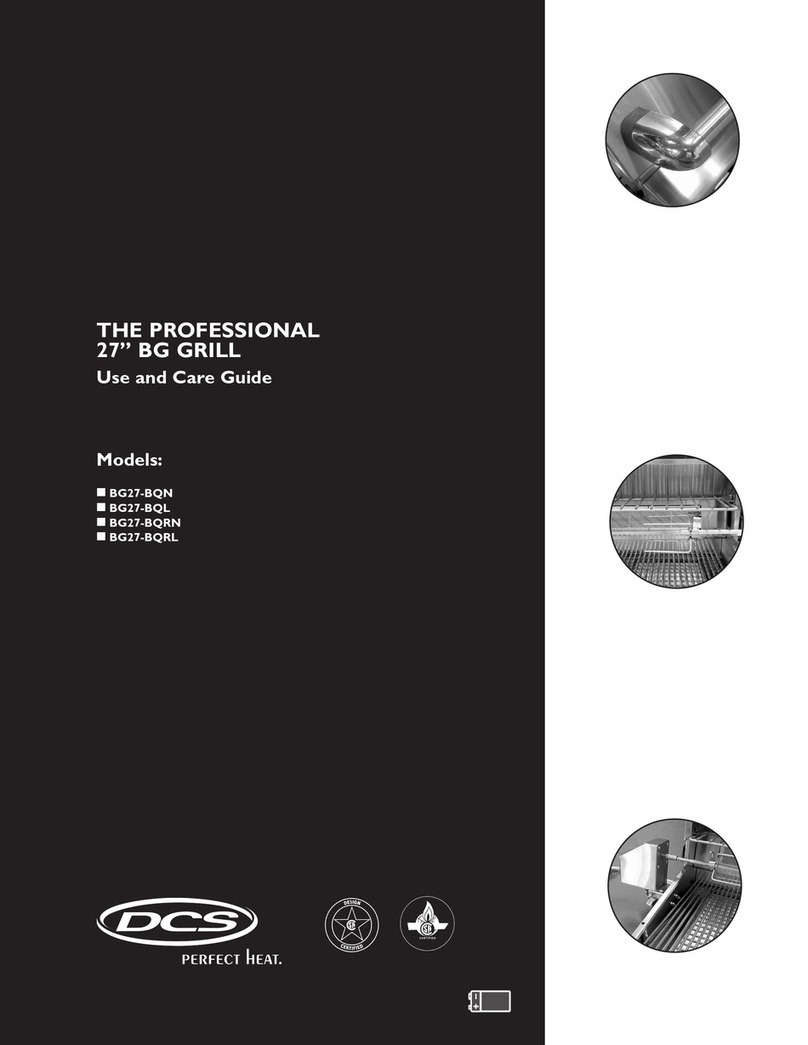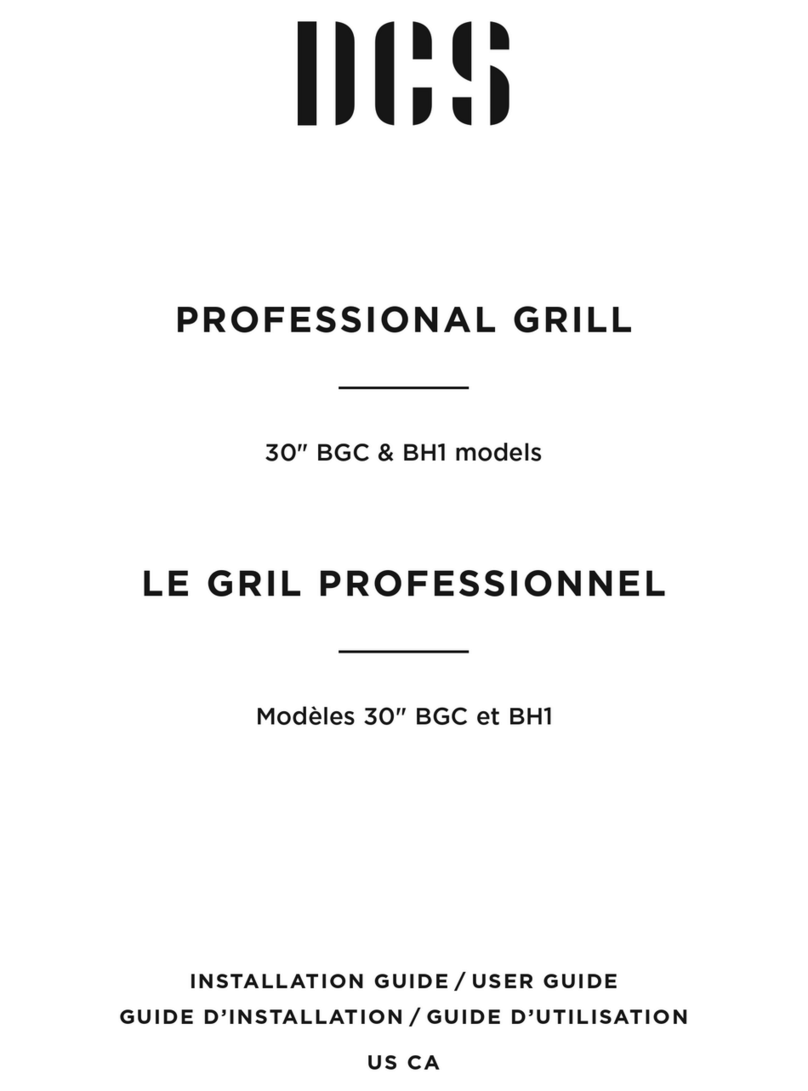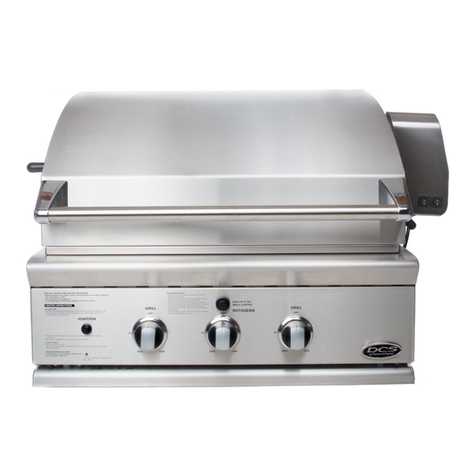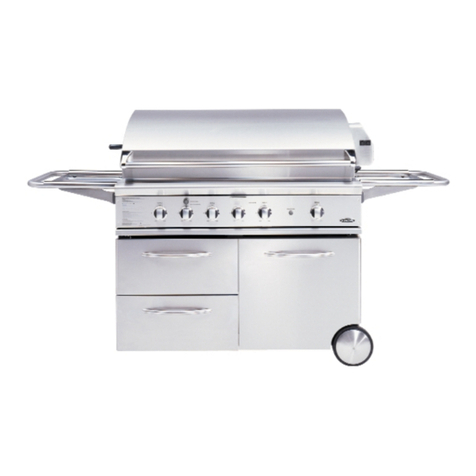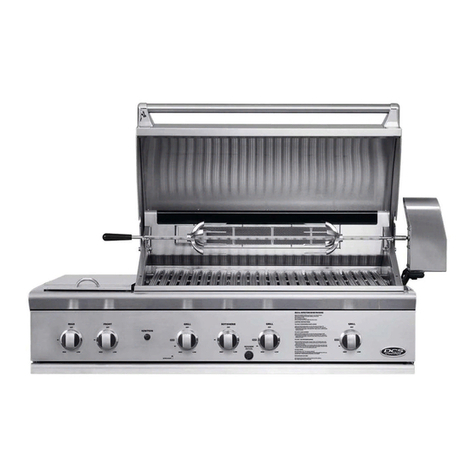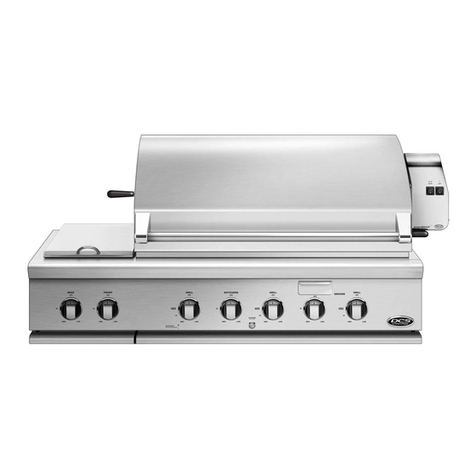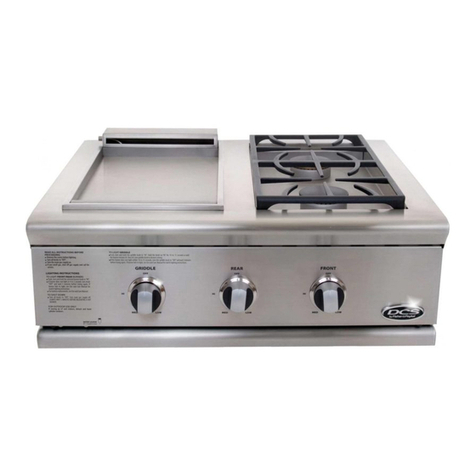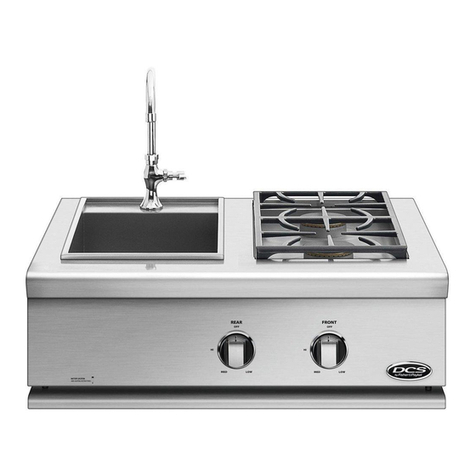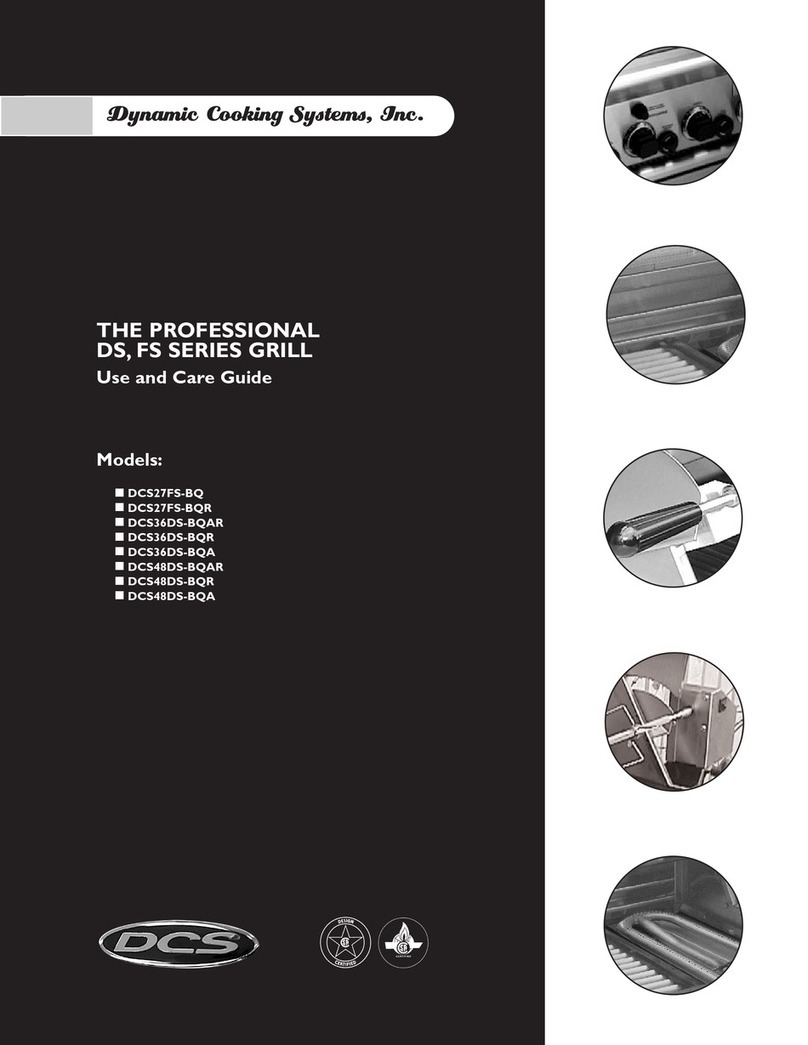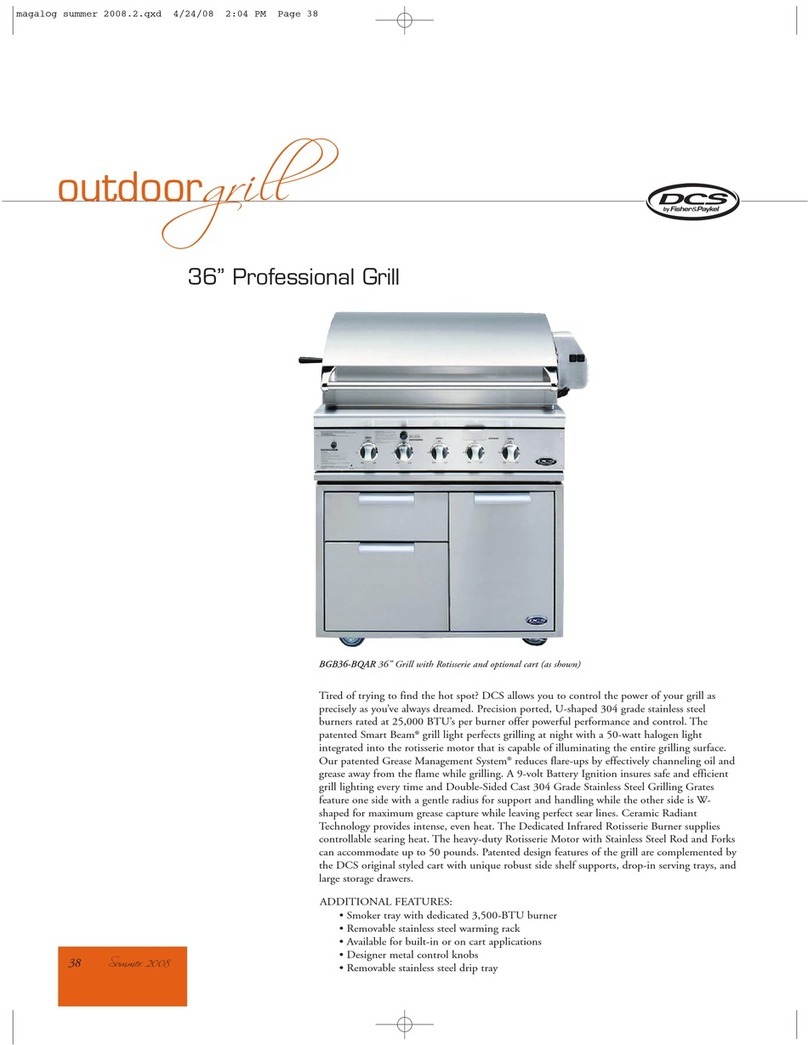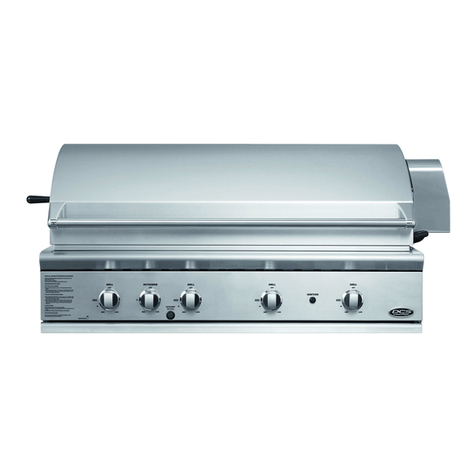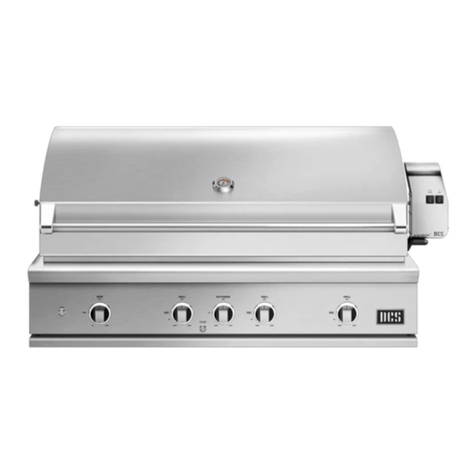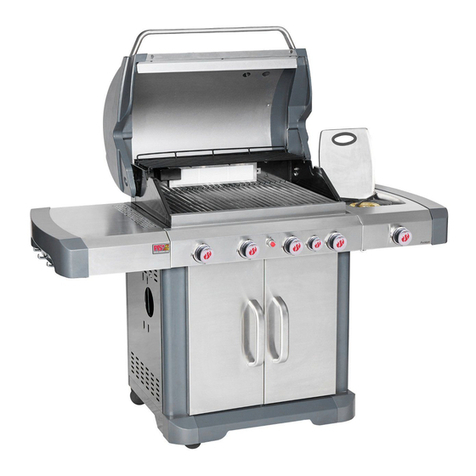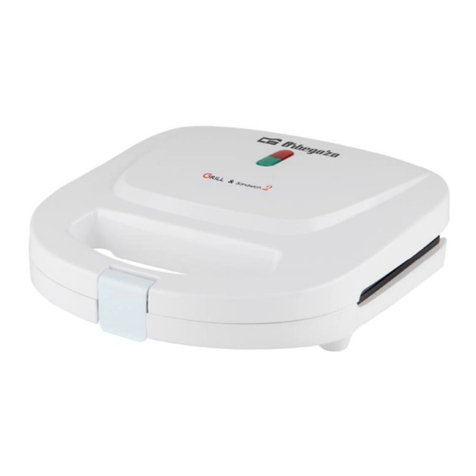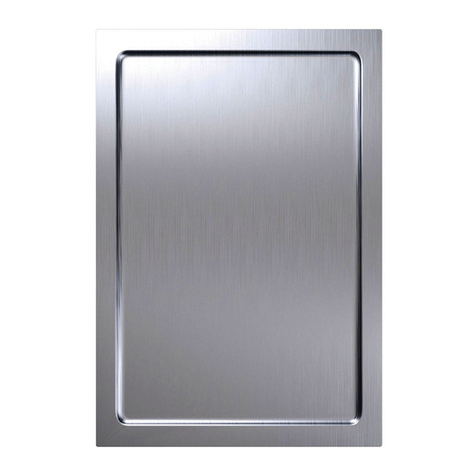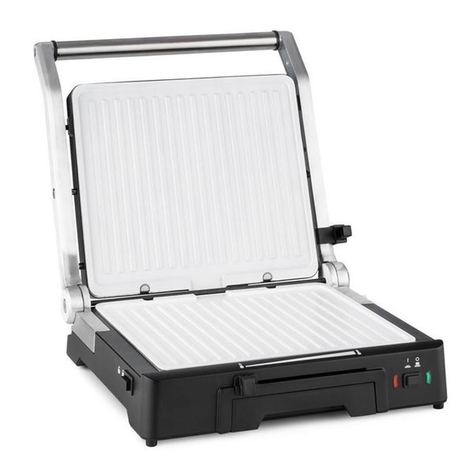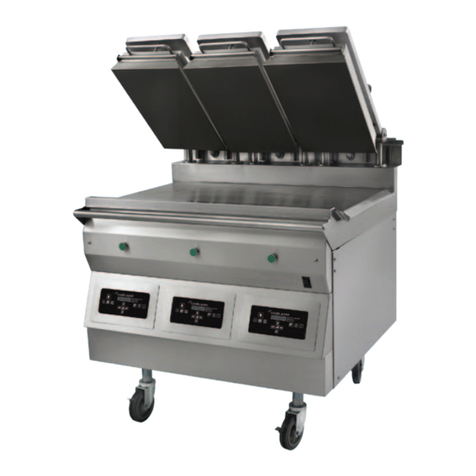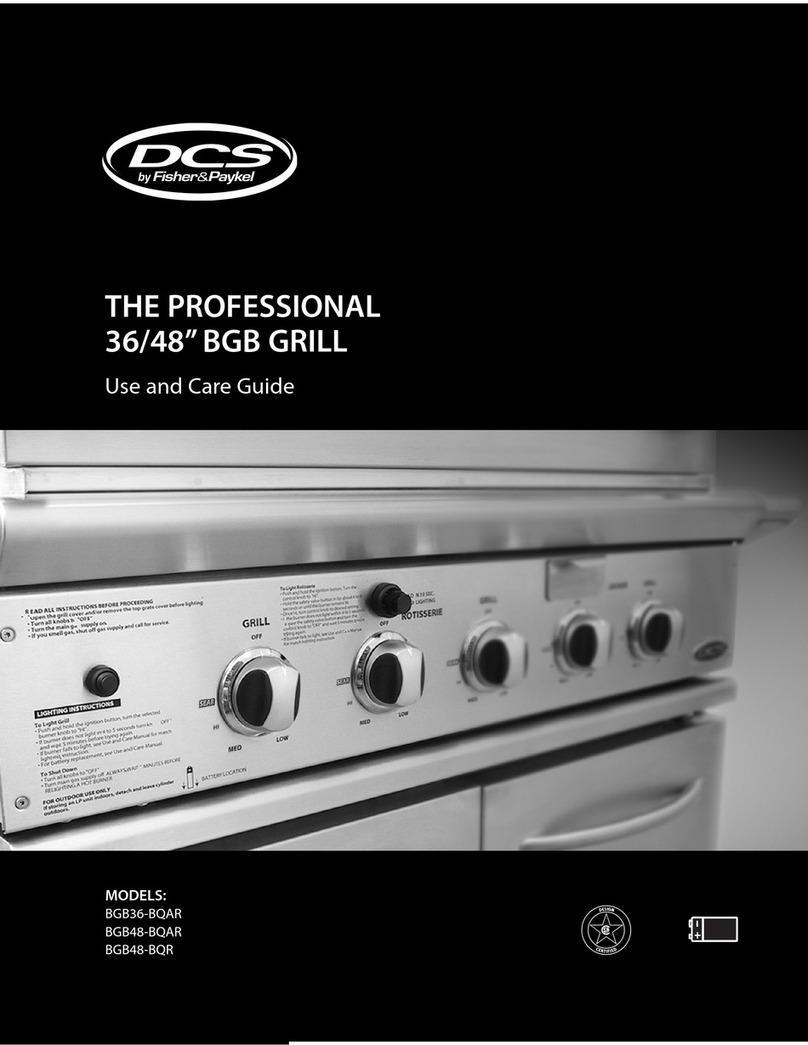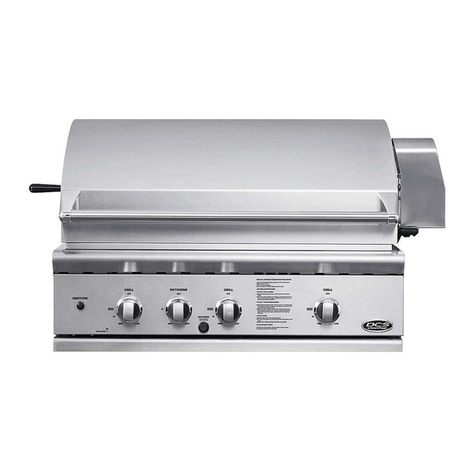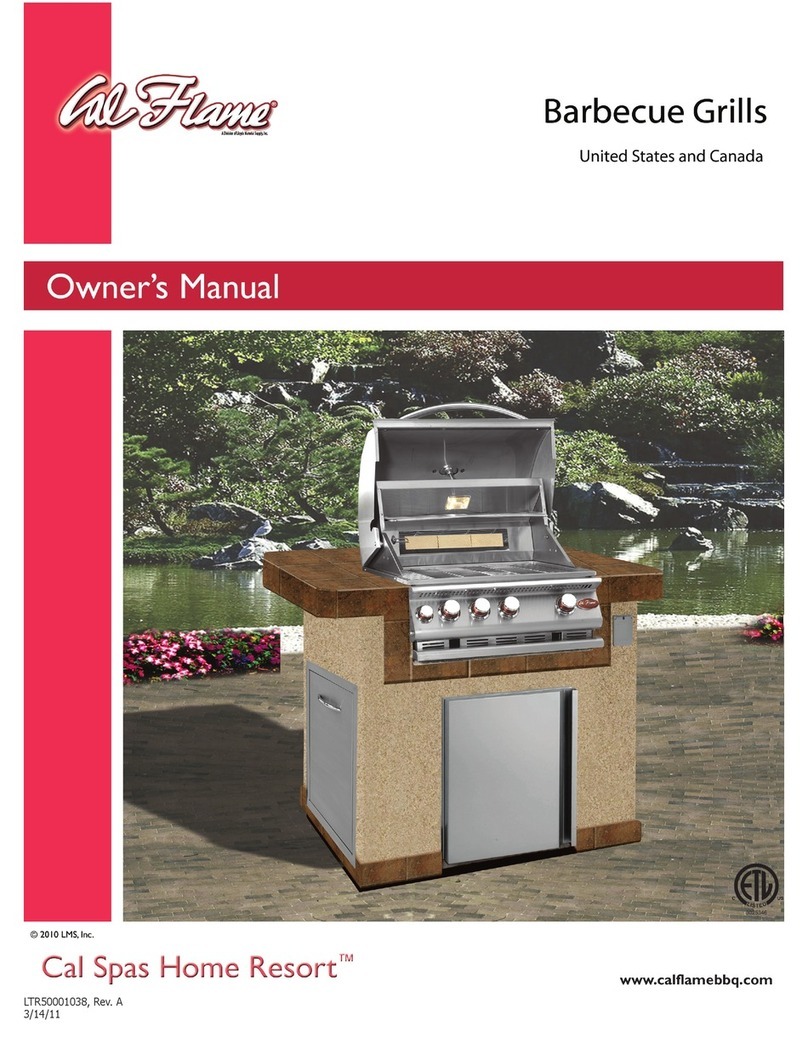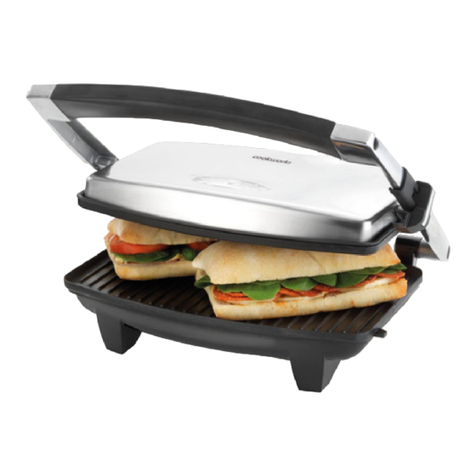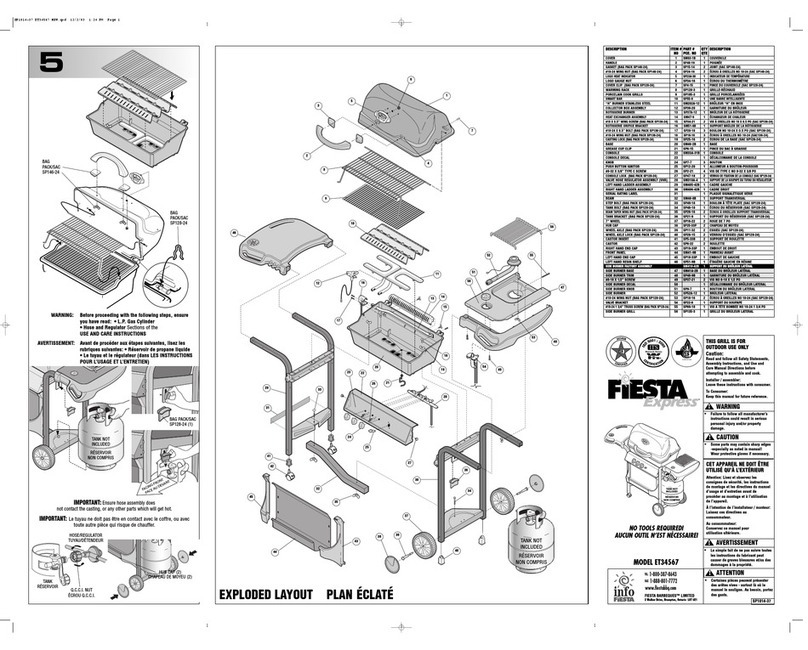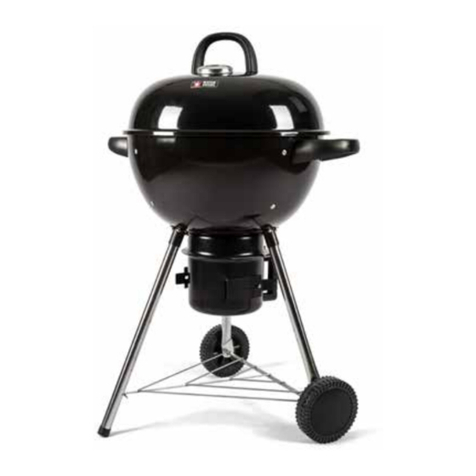
4
SAFETY AND WARNINGS
IMPORTANT SAFETY INSTRUCTIONS!
yChildren should not be left alone or unattended in an area where the grill is being used. Never allow
them to sit, stand or play on or around the grill at any time. When in use, portions of the grill get hot
enough to cause severe burns.
yDo not store items of interest to children around or below the grill, in the cart or masonry enclosure.
Never allow children to crawl inside a cart or enclosure.
yAfter a period of storage or non-use (such as over the winter), the gas grill should be checked for
gas leaks, deterioration, proper assembly, and burner obstructions before using.
yDo not heat unopened food containers as a build-up of pressure may cause the container to burst.
yAlways use a covered hand when opening the grill lid and only do so slowly to allow heat and steam
to escape.
yDo not try lighting this appliance without reading the “LIGHTING INSTRUCTIONS” section of this
manual (page 21).
yAfter lighting burners, make sure burners are operating normally (see page 18).
yDo not use aluminum foil to line drip pans or grill grates or radiants. This can severely upset
combustion air flow or trap excessive heat in the control area. The result of this can be melted knobs
or damaged ignition components.
yDo not operate with a damaged cord or plug or after the appliance malfunctions or has been
damaged in any manner. Contact the manufacturer for repair.
yDo not let the rotisserie cord hang over the edge of a table or touch hot surfaces.
yDo not use an outdoor cooking appliance for purposes other than intended.
yFor personal safety, wear proper apparel. Loose fitting garments or sleeves should never be worn
while using this appliance. Some synthetic fabrics are highly flammable and should not be worn
while cooking. Only certain types of glass, heat-proof glass ceramic, earthenware, or other glazed
utensils are suitable for grill use. These types of materials may break with sudden temperature
changes. Use only on low or medium heat settings according to the manufacturer’s directions.
ySpiders and insects can nest in the grill burners, causing gas not to flow through the burner. The gas
will flow from the front of the burner into the control panel. This is a very dangerous condition which
can cause a fire to occur behind the valve panel, thereby damaging the grill components and making
it unsafe to operate.
yKeep the area surrounding the grill free from combustible materials, trash, or combustible fluids
and vapors such as gasoline, charcoal or lighter fluid. Do not obstruct the flow of combustion and
ventilation air.
yNever use the grill in windy conditions. If located in a consistently windy area (oceanfront,
mountaintop, etc.) a wind break will be required. Always adhere to the specified clearances as
defined in the “INSTALLATION” section of this manual. Refer to the “Grill Placement” section for
details if fitting a wind break.
yCALIFORNIA PROPOSITION 65-WARNING: The burning of gas cooking fuel generates some
by-products which are on the list of substances which are known by the State of California to cause
cancer or reproductive harm. California law requires businesses to warn customers of potential
exposure to such substances. To minimize exposure to these substances, always operate this unit
according to the manual, ensuring you provide good ventilation when cooking with gas.
yThis outdoor cooking gas appliance is not intended to be installed in or on recreational vehicles,
trailers and/or boats.
yNote: this product must be installed by a licensed plumber or gas fitter when installed within the
Commonwealth of Massachusetts.
yWhen using the side burners always use flat bottomed pans which are large enough to cover
the side burner. Adjust the flame so that it heats only the bottom of the pan to avoid ignition of
clothing. Position handles inward away from open edges of the unit to avoid burns associated
with unintentional spillovers. Hold the handle of the pan to prevent movement of it when turning
or stirring food. For proper lighting and performance of the burners keep the ports clean. It is
necessary to clean periodically for optimum performance.
